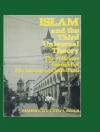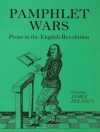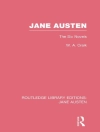‘A Tale of a Tub’ is a seminal work of satire written by Jonathan Swift that masterfully critiques the religious and political landscape of early 18th-century England. Through a complex narrative structure, Swift employs allegory and parody to explore the discord among Protestant sects, particularly highlighting the tensions between the Church of England, Puritanism, and Roman Catholicism. The novel is characterized by its distinctive prose style—marked by vivid imagery, sharp wit, and substantial rhetorical flair—effectively engaging readers in a philosophical discourse while maintaining a humorous undertone. This intricate tapestry of themes positions Swift as a leading figure in the realm of social critique during the Enlightenment period. Jonathan Swift, an influential satirist, essayist, and political pamphleteer, was deeply embedded in the sociopolitical turmoil of his time, shaping his perspectives on religion and governance. His experiences as a churchman and his observations on the follies of human nature fuel the sharp critiques found in ‘A Tale of a Tub.’ Moreover, Swift’s own frustrations with the political machinations of his era imbue the text with a profound sense of urgency and a call for moral introspection. This work is not only a compelling read for those interested in literary history but also serves as an essential study for contemporary readers seeking insight into the nature of belief and conflict. Swift’s intricate narrative challenges us to reflect on the absurdities of sectarianism and hypocrisy, making ‘A Tale of a Tub’ a timeless exploration of human folly that resonates powerfully across centuries.
About the author
Jonathan Swift (1667–1745) was an Anglo-Irish satirist, essayist, political pamphleteer, poet, and cleric who became the Dean of St. Patrick’s Cathedral, Dublin. Swift is remembered for the remarkable potency of his satirical prowess, the most considerable being ‘Gulliver’s Travels’. Born in Dublin, Ireland, he received his Bachelor of Arts from Trinity College and subsequently began a career in the church. Swift’s literary style is characterized by a blend of irony, bitter sarcasm, and fierce ridicule. His mastery of satire engendered literature that serves not only as entertainment but also as a powerful tool of social criticism. ‘A Tale of a Tub’, written early in his career, exhibits his gift for censure through prose woven with intricate allegories and sharp humor. The work, published in 1704, assaults both the corruptions of the Church and the pedantry and intellectual folly of various schools of philosophy. It showcases his comfort with controversial subjects and his delight in lambasting the dogmas of his time. ‘A Tale of a Tub’ is considered a critical piece in understanding Swift’s evolution as a writer and serves as a forerunner to his later, more recognized satirical compositions. Swift’s contribution to English literature marks him as a key figure of the early Enlightenment period, with continued influence on modern political satire and essayist traditions.












